063: Window Shopping in Antwerp
For the love of designers new and treasured
A few weeks ago, my husband and I planned an impromptu trip to London, something to take the edge off a vortex of a year before embarking on IVF. With ten days to work with and tail winds working in our favor, London made sense. We talked about where we could take a short train ride to from there (well, he did; I already knew). Brussels? Ghent?
To visit a city because of a designer isn’t the sort of reasoning you can give to normal people in possession of a good head on a set of stable shoulders. But it’s why Antwerp had been one of the cities I’d wanted to travel to for quite some time. And the designer in question? Dries Van Noten, of course.
Antwerp, I casually insisted, without betraying a hint of my agenda.
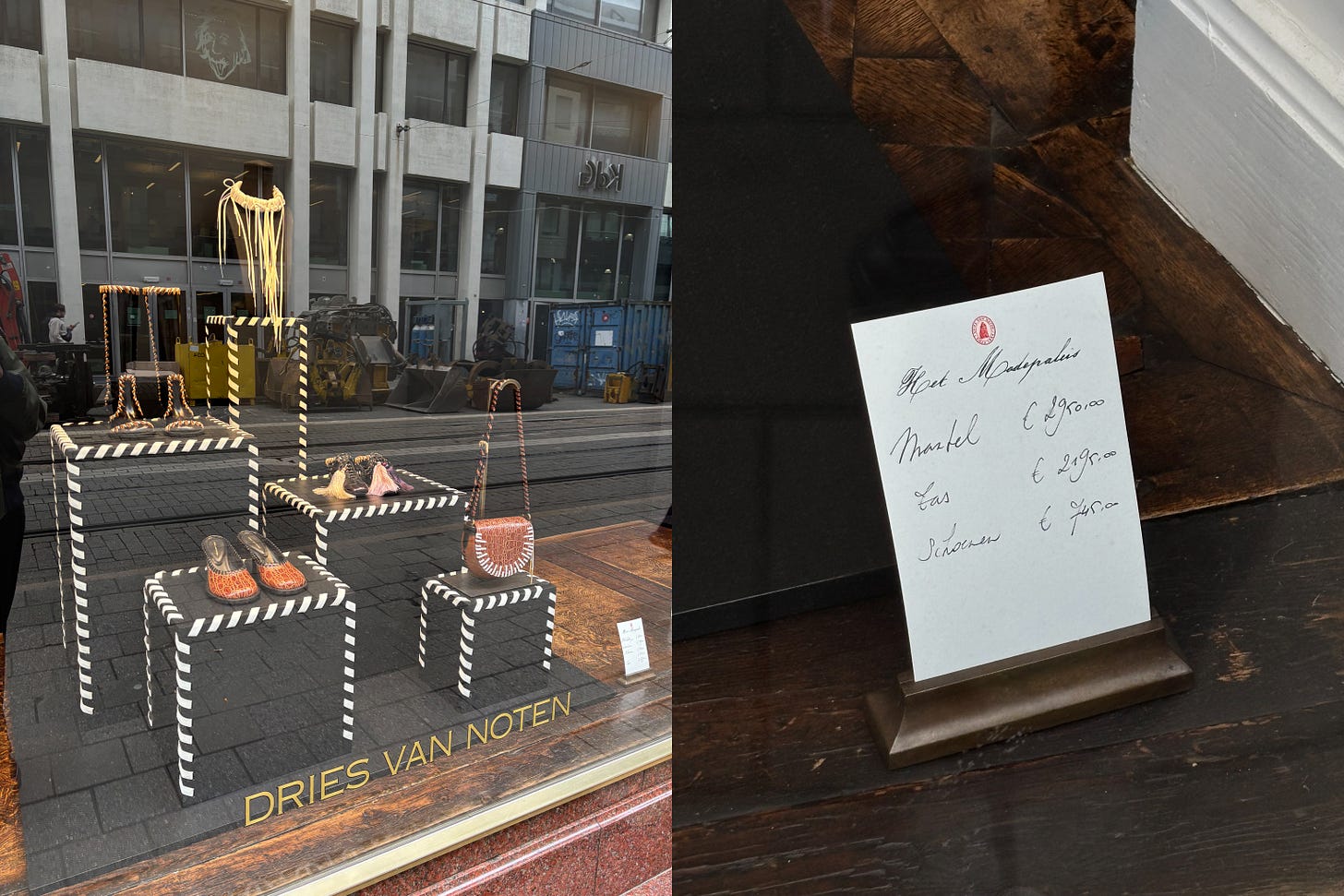
After checking into our hotel and re-painting my face, we set out. Our first stop was Rosier 41, a most meticulously organized secondhand designer shop. One might say it’s rather unorthodox to choose a shop as the first destination in a new city, but I’d argue, unless that city is Antwerp. The Rosier 41 windows are dedicated to beloved designers, as well as young graduates from the Royal Academy of Arts. Earlier in the summer, the windows displayed a private collection of Martin Margiela’s AIDS awareness t-shirts from Autumn/Winter 1994. During our trip there, pieces designed by Selena Wang, a student at the Royal Academy, stood in the windows.
Inside the shop, the clothes are organized by designer: Christian Wijnants, Ann Demeulemeester, Yohji Yamamoto, Comme des Garcons, some Prada, and an abundance of Dries Van Noten. A second room showcases racks of pieces from contemporary brands. It takes an incredible amount of self-restraint to not walk out with everything, though one is bound to have regrets for not doing so. I left Rosier 41 armed with a wispy lurex printed skirt from Dries Van Noten’s Ophelia/Summer of Love collection.
The following day, on our way to the Royal Museum of Fine Arts – reader I assure you we didn’t just go for the shops, we did also see art and eat excellent food, which I’ll get more into next week – we stopped into Labels Inc., a consignment shop offering the Belgian and Japanese greats, among other designers. While both Rosier 41 and Labels Inc. draw from a similar roster of designers, their temperaments couldn’t be more different, the former being more vibrant and eccentric, the latter decidedly moodier. Labels Inc. has an ongoing collaborative project with the Royal Academy of Arts, where student collections are displayed. The shop also regularly invites artists to reimagine their windows. And yes, I left with a menswear-inspired brown jacket by Dries Van Noten from the 90’s.
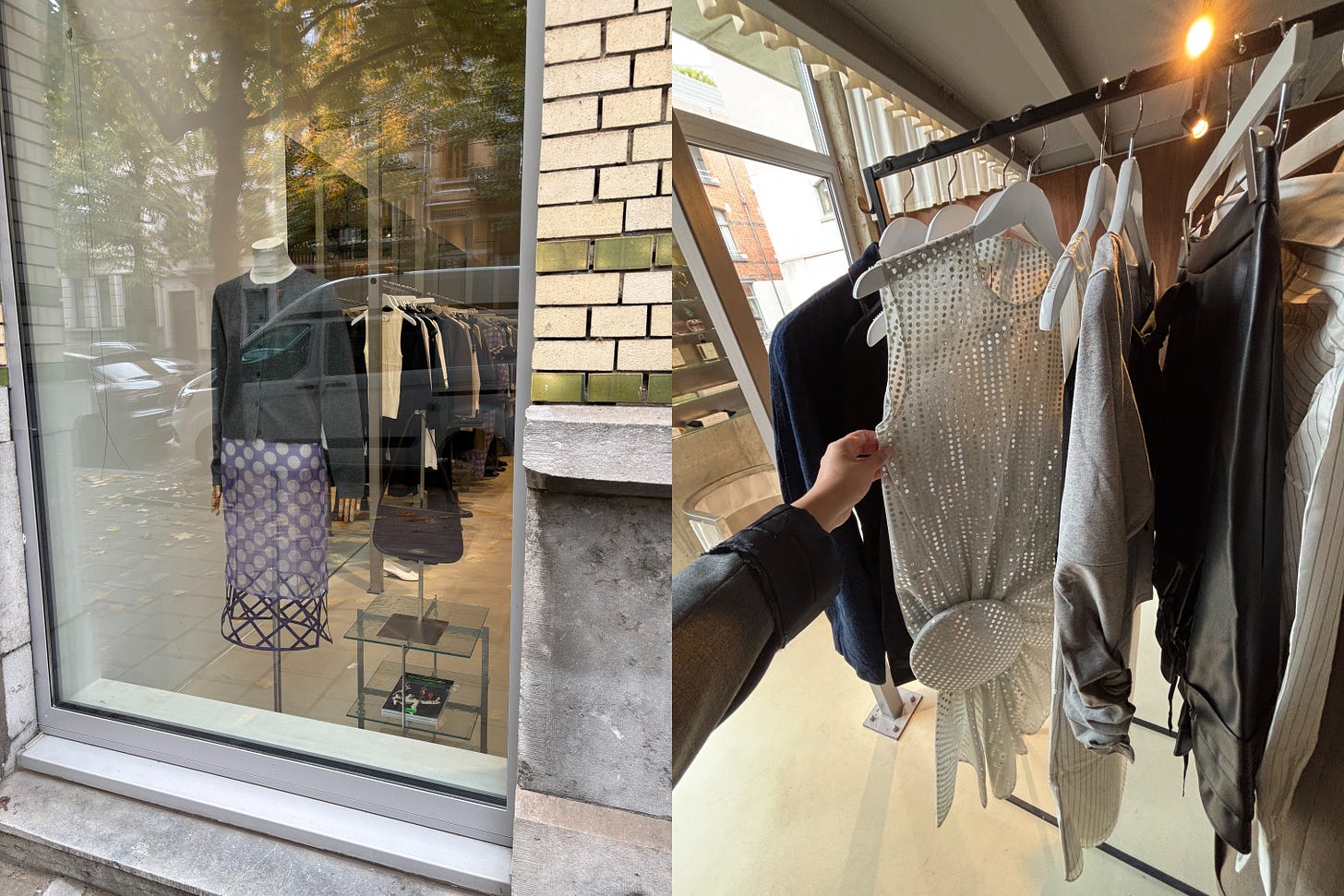
A stone’s throw from the Royal Museum is The Menu, a multibrand shop which carries an extensive selection of some of my favourite women-owned labels including Renaissance Renaissance, Super Yaya, and FANE (all of whom have undeservedly-limited presence across shops in America), as well as accessories and houseware. I immediately knew I had to go in when I spotted a purple and white polkadot skirt by Super Yaya, and the chocolate brown FANE bag beside it. Not far from the central shopping district is Renaissance, the younger sister to Princess located next door, which was originally founded in 1953. On the particular day I wandered in, the dress forms lining the entrance were outfitted in August Barron’s fall collection. Inside, one can find an enviable amount of Julie Kegels, Bernadette, Dries Van Noten, and Meryll Rogge’s recently launched B.B. Wallace.
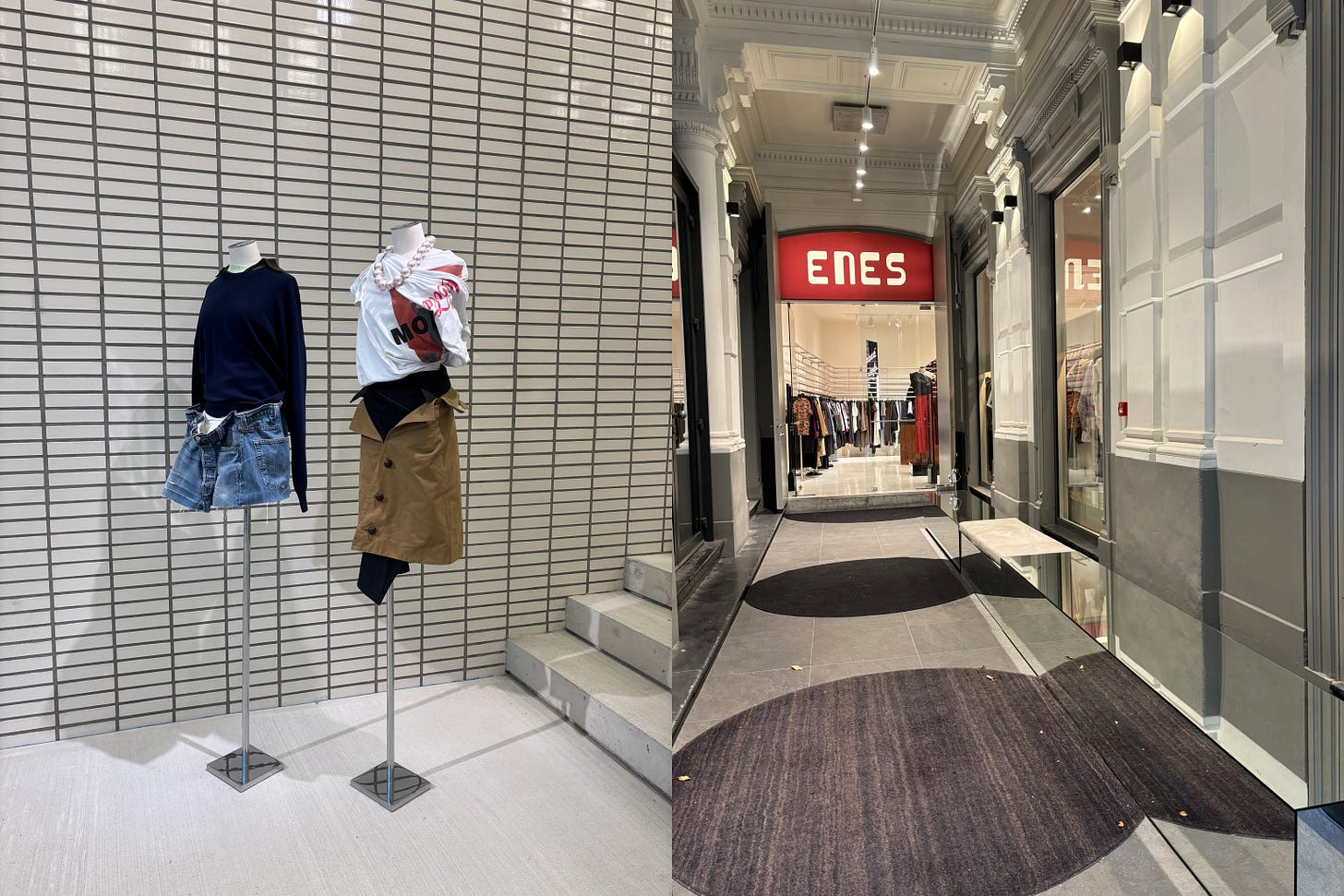
While walking past shops in Antwerp, I began to understand just how significant windows are. In the morning, before doors opened for the day, I noticed people in shop windows readjusting displays or setting a new scene. Passersby stoped to take in the windows, a pair of shoes, a skirt, its price. As we stood in front of one of the elaborate windows of Dries Van Noten, an elderly couple crossed the street to discuss a men’s suit that had caught the woman’s eye. Window shopping becomes a way in which to learn, discover, and fantasize.
In New York, the exteriors of standalone designer shops and the city’s few remaining multibrand spaces can be quite remote. Some windows display marketing campaigns of the moment and very little of what’s in store, while others are shrouded in mystery, signaling cold exclusivity. Those who walk by are not encouraged to investigate and admire.
Despite shopping being a significant element of Antwerp’s tourism industry, noticeably absent is the presence of luxury’s heavy-hitters. Many spaces, it seems, have a particular fondness for emerging and young designers, and those of designers such as Christian Wijnants, with its leafy atrium in the background, invite in, rather than intimidate. The window is transformed into a platform for collaboration and community, fostering awareness and underscoring appreciation of designers new and treasured.
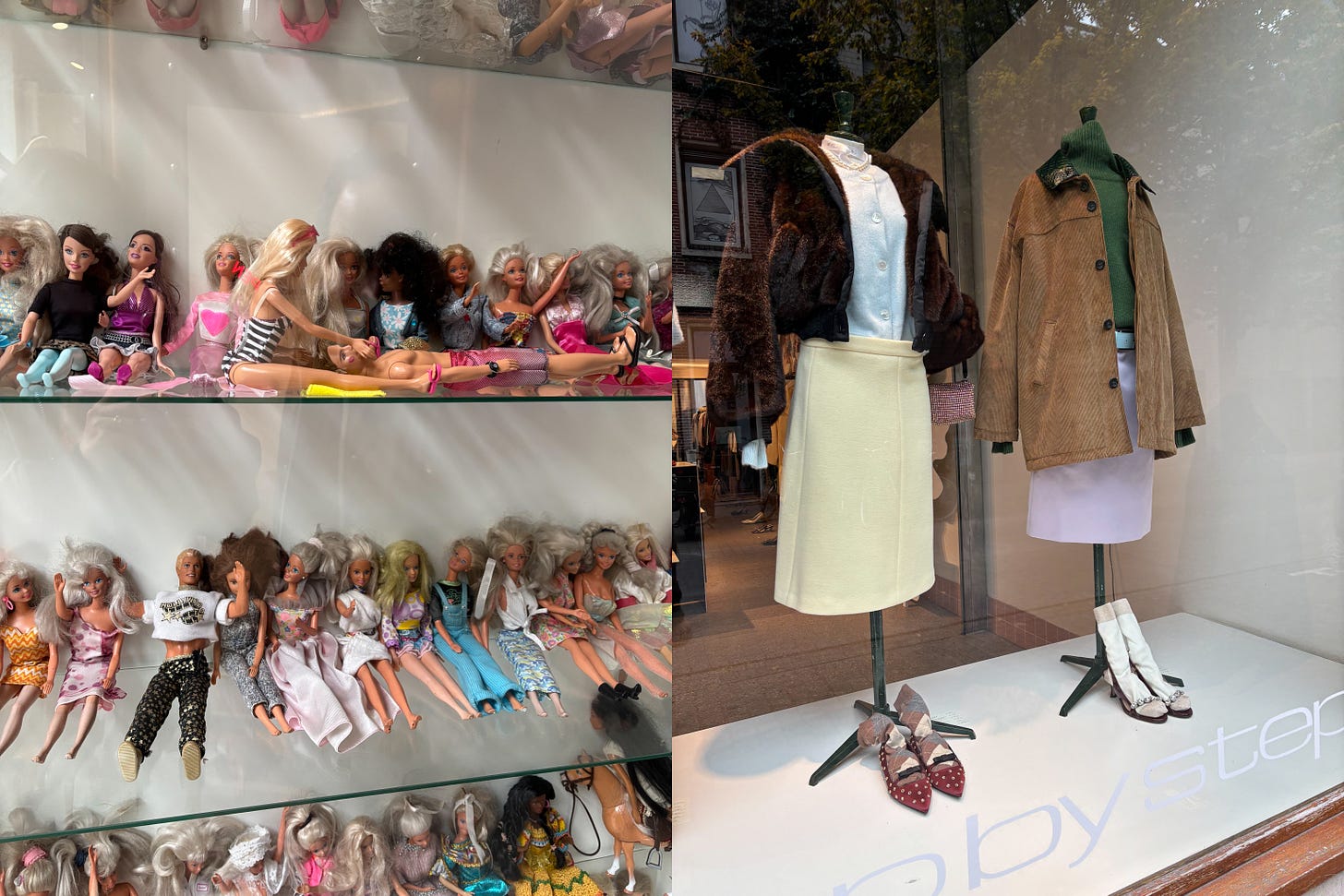
Antwerp is home to the awe-inspiring fashion museum MoMu, its collection ranging from the works of Ann Salens, to that of Martin Margiela and Simone Rocha. Its presentations seek to inform and pique curiosity, and I suspect, inspire. The shops of Antwerp are not unlike the museum itself, keen to offer new ideas, not more of the same. Window shopping here is an exercise in broadening one’s horizons, making a case for the exceptional work of designers beyond household names, offering the curious among us to get up close and enquire.


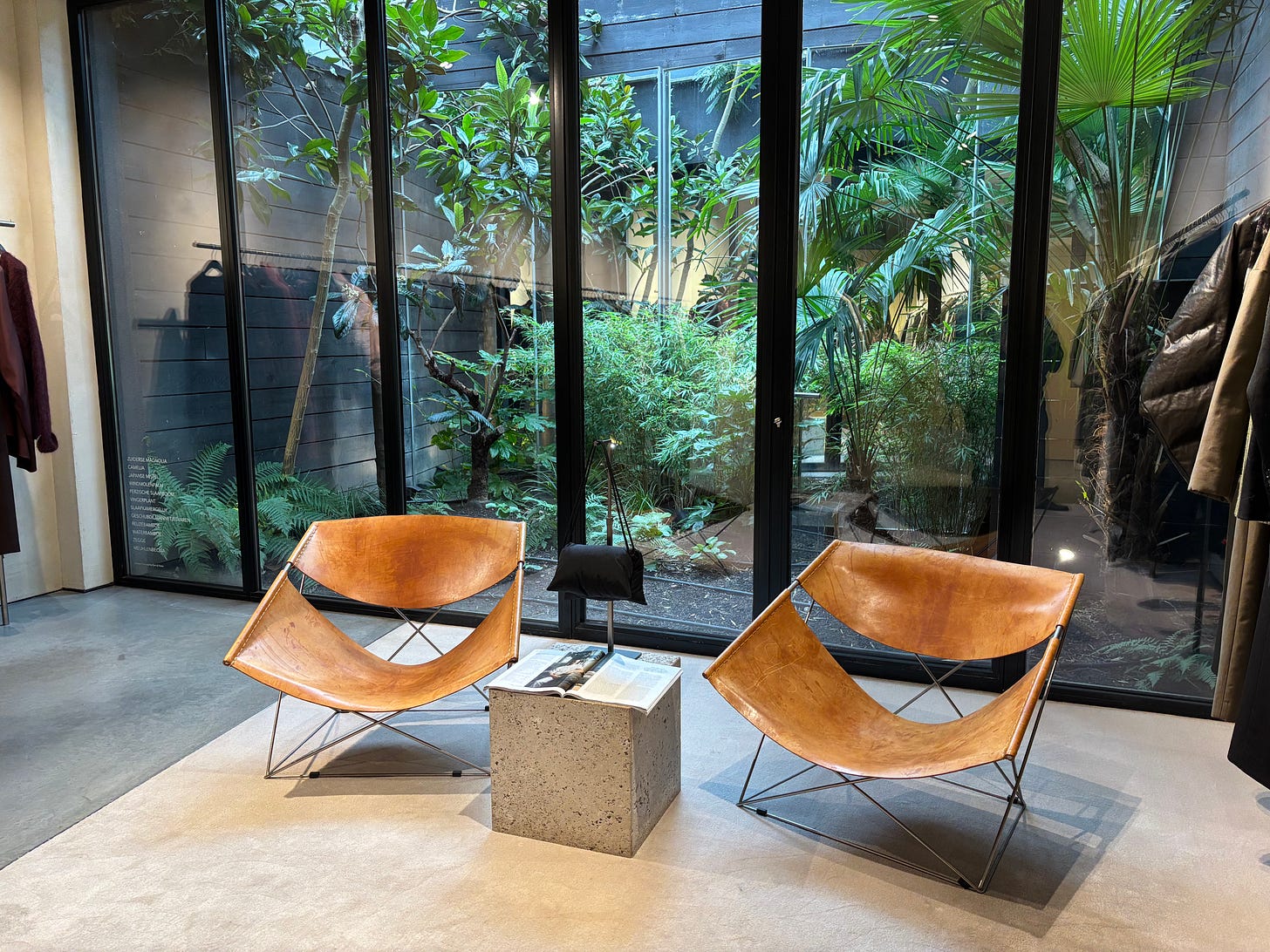
We are planning a trip for next year that will include Antwerp and/or Brussels - I need to save your Sustacks!
What a wonderful tribute to this wonderful city <3